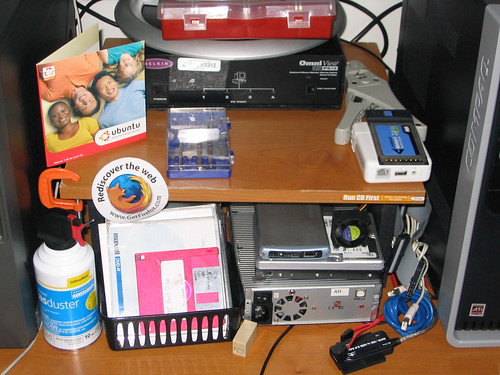By following this 9 tips you can make your computer healthy and safe always.

1. Run Windows Update for Windows XP and 2000. Make sure Internet Explorer and other browsers are updated to the latest versions.
2. Connect your computer to a hardware firewall, or run a free firewall program such as Zone alarm. This will ensure that hackers do not intrude your computer using newly discovered Windows vulnerabilities. If you use a hardware based firewall, make sure that only ports of services you need are enabled (such as web browsing - HTTP is port 80). Many of the firewalls for home use allow all ports to be open by default - you turn off services by entering ranges of ports to be blocked. (See the instruction manual of your firewall).
3. Install adware detection programs, such as Adware or SPYBOT: Search and Destroy, which are free for download. Run these at least every other day if you are an active web surfer, constantly doing research or shopping online.
4. Run anti-virus software and make sure virus definitions are set to automatically update or you should check for updates, manually. If your anti-virus subscription has run out, uninstall it, and install AVG Anti-Virus by
www.Grisoft.com for a free personal edition (Do not run this on your work computer without paying for it!).
5. If you have an older computer, investigate any suspicious "whirring" noises. A hard drive that is making a very loud "whirring" noise may be aging and damaged by heat - consider replacing it soon. Also, make sure that all fans are running properly, inside, and that there are no large collections of dust on the motherboard, PCI cards, or the fans. If so, be very careful in removing it. All power should be turned off, including removal of the power cord, as some motherboards maintain a small charge from the power supply even after the computer is actually turned off.
6. Run the Windows XP / 2000 disk defragmenter once per month. This allows for data files to be stored with each segment next to each other in order, on the disk. Without defragmenting, Windows will store data where ever it finds space, but many times it will store pieces of a data file in many different areas on a hard drive. This is how it was designed. It is faster for Windows to store data in just anyplace it can, without having to think about storing everything close together - that apparently would be too much logic to be used at one time and slow down the immediate saving of files (this is *only* my guess).
7. Make sure programs and drivers are updated. If everything seems to be working, check for driver updates once per year.
8. This is not necessarily related to your computer's health, but before if it ever does get sick, it is good to make sure that you are getting regular backups. Try backing up your My Documents folders and files to a CD every month and carefully label and store it away. If it seems to be too much hassle to burn a CD, try getting a USB memory device and backup your files to this once in awhile, though these are not as reliable as a CD backup (they are prone to problems with static electricity and breakage), they are better than no backup at all.
9. Use a UPS (Uninterruptable Power Supply) to ensure that your computer gets good voltage and is not turned off when the power hiccups. Also, make sure you do not turn off your computer abruptly - always go through the Start button and shutdown or control-alt-delete, click shutdown sequence to ensure that your computer is shut down as graceful as possible.
 நாட்டின் மிக பெரிய லஞ்ச ஊழல் நடமாடும் வட்டார போக்குவரத்து கழகத்தின் (RTO) ஆன் லைன் சர்வீஸ் செயல்ப்படும்.
நாட்டின் மிக பெரிய லஞ்ச ஊழல் நடமாடும் வட்டார போக்குவரத்து கழகத்தின் (RTO) ஆன் லைன் சர்வீஸ் செயல்ப்படும்.  Everybody use email accounts and social networking websites such as orkut, twitter and facebook. There are many important information of a person in these email accounts and social networking website. so it is important to protect these account from hackers. Because hackers always try to get others account to get those secret and personal data for bad purpose. If use your email id for business and other services then it's a great loss and trouble for you. So always try to be safe from hackers
Everybody use email accounts and social networking websites such as orkut, twitter and facebook. There are many important information of a person in these email accounts and social networking website. so it is important to protect these account from hackers. Because hackers always try to get others account to get those secret and personal data for bad purpose. If use your email id for business and other services then it's a great loss and trouble for you. So always try to be safe from hackers





